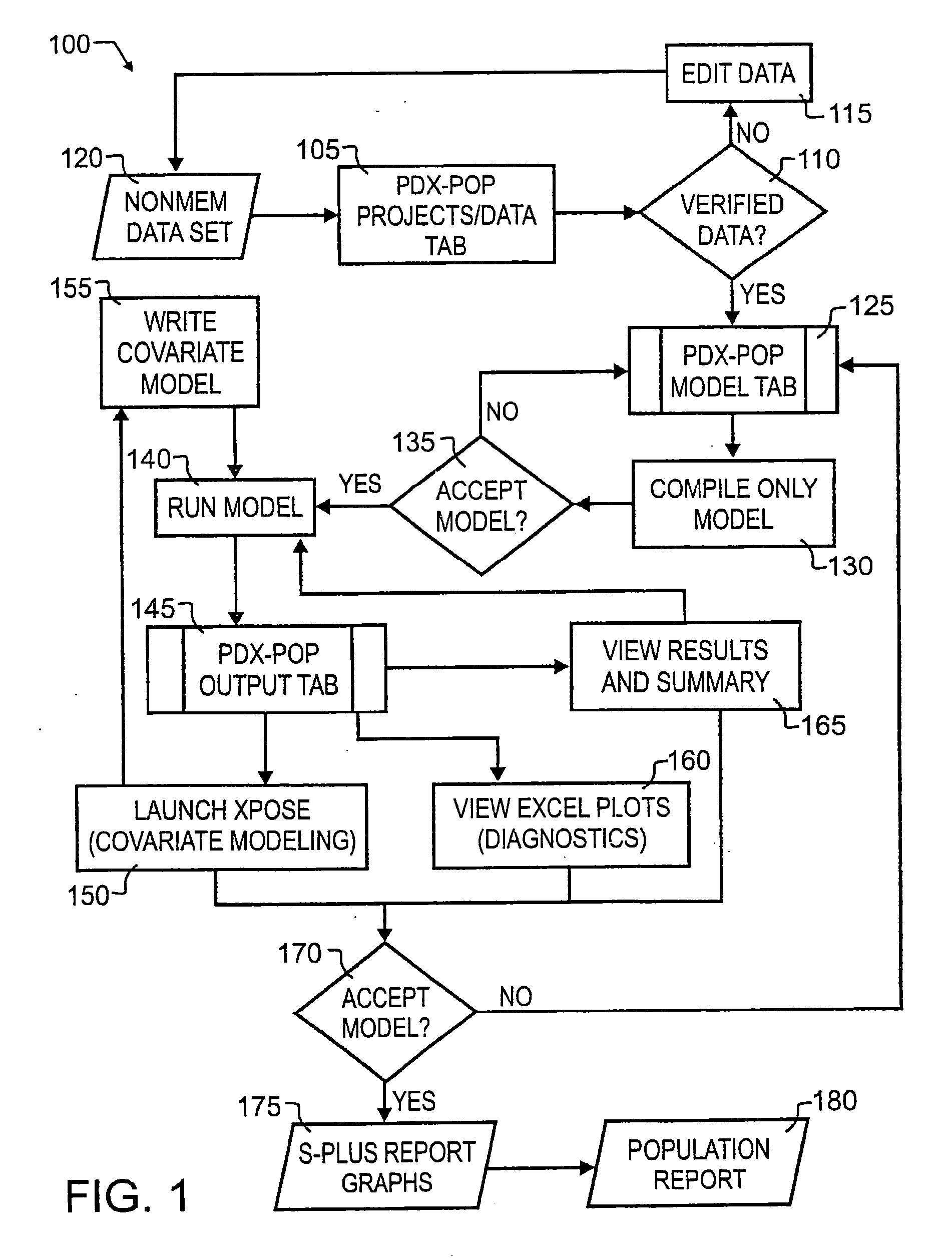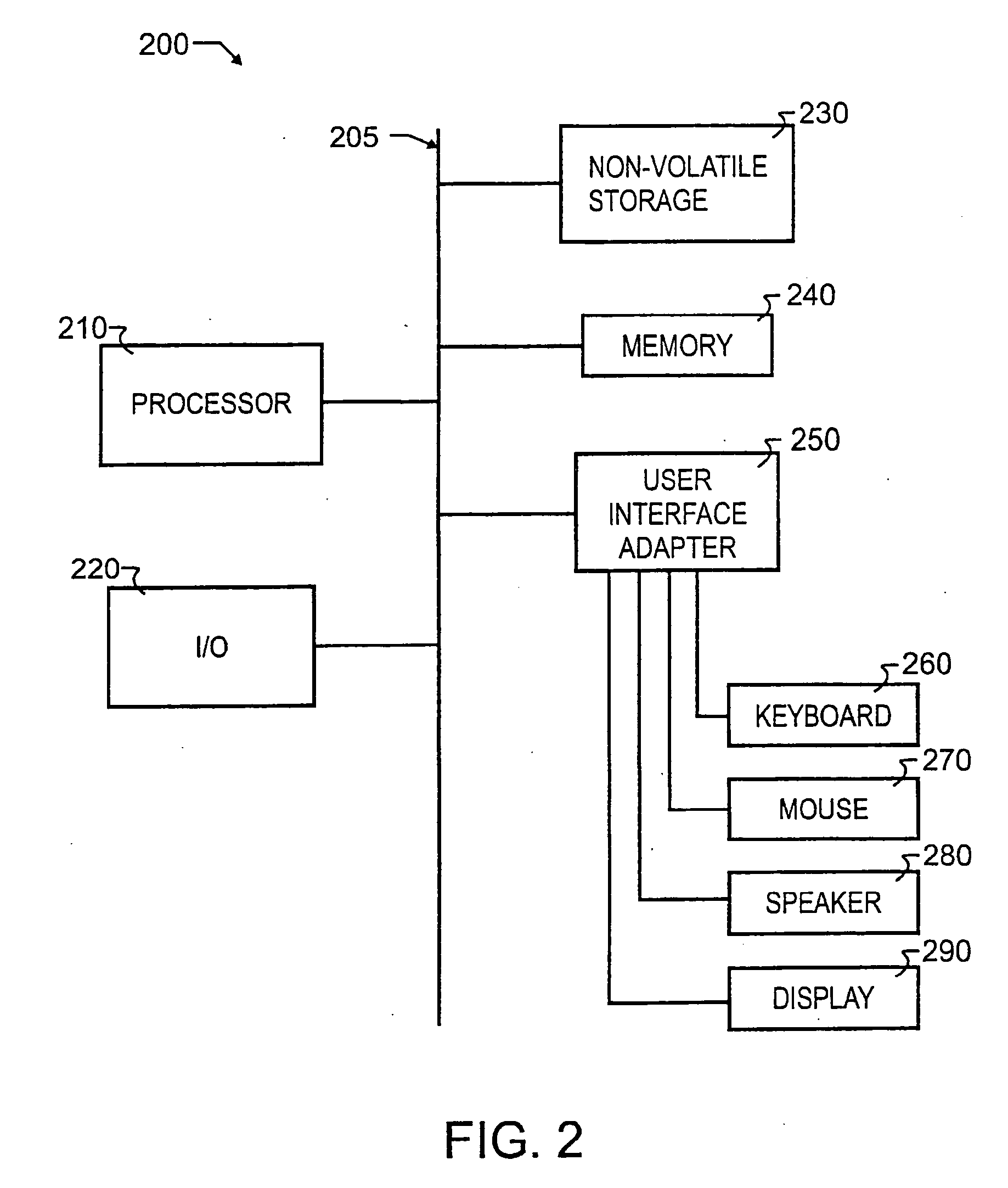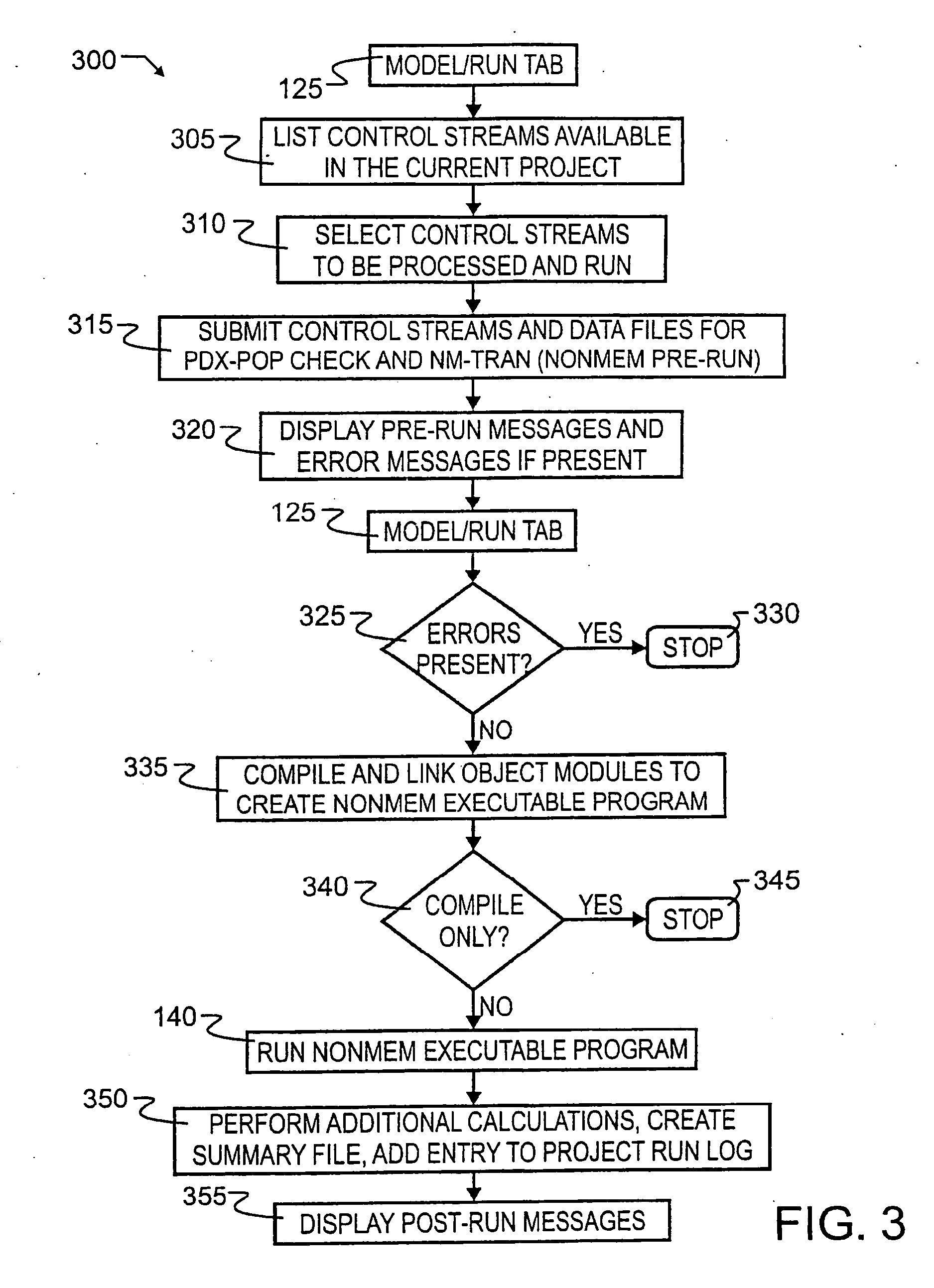Population pharmacokinetic modeling and analysis (PDX-POP(TM))
a pharmacokinetic modeling and population technology, applied in the field of biological system data processing, can solve the problems of not always taking into account the multi-variable dynamic nature of patients, many prior art methods of obtaining biological process data require time-consuming laboratory experiments, and complex information does not always provide a clear and consistent picture, etc., to improve the user experience, enhance the user experience, and enhance the data management and exploration
- Summary
- Abstract
- Description
- Claims
- Application Information
AI Technical Summary
Benefits of technology
Problems solved by technology
Method used
Image
Examples
Embodiment Construction
[0032] A preferred embodiment integrated population pharmacokinetic modeling and analysis method 100 is illustrated in FIG. 1 by simplified block diagram. As illustrated therein, preferred method 100 seamlessly integrates existing software packages and tools to expedite the iterative process of population pharmacokinetic modeling and analysis. Working in concert with preferred NONMEM, S-PLUS Analytic Software and MS Excel, preferred method 100 delivers optimal flexibility, increased efficiency and added functionality.
[0033] Preferably, the user interface will comprise software for driving a menu-driven, multi-window graphical interface which will allow the user to easily manipulate and analyze data in one or more simultaneous viewer windows. In a preferred embodiment, the user interface is adapted to provide the look and feel of an Internet browser interface, a Windows 95 / 98 / 2000 / ME / NTXP interface, a KDE interface, or other X-Windows type interface.
[0034] Preferred method 100 foll...
PUM
| Property | Measurement | Unit |
|---|---|---|
| residual plots | aaaaa | aaaaa |
| time | aaaaa | aaaaa |
| concentration | aaaaa | aaaaa |
Abstract
Description
Claims
Application Information
 Login to View More
Login to View More - R&D
- Intellectual Property
- Life Sciences
- Materials
- Tech Scout
- Unparalleled Data Quality
- Higher Quality Content
- 60% Fewer Hallucinations
Browse by: Latest US Patents, China's latest patents, Technical Efficacy Thesaurus, Application Domain, Technology Topic, Popular Technical Reports.
© 2025 PatSnap. All rights reserved.Legal|Privacy policy|Modern Slavery Act Transparency Statement|Sitemap|About US| Contact US: help@patsnap.com



